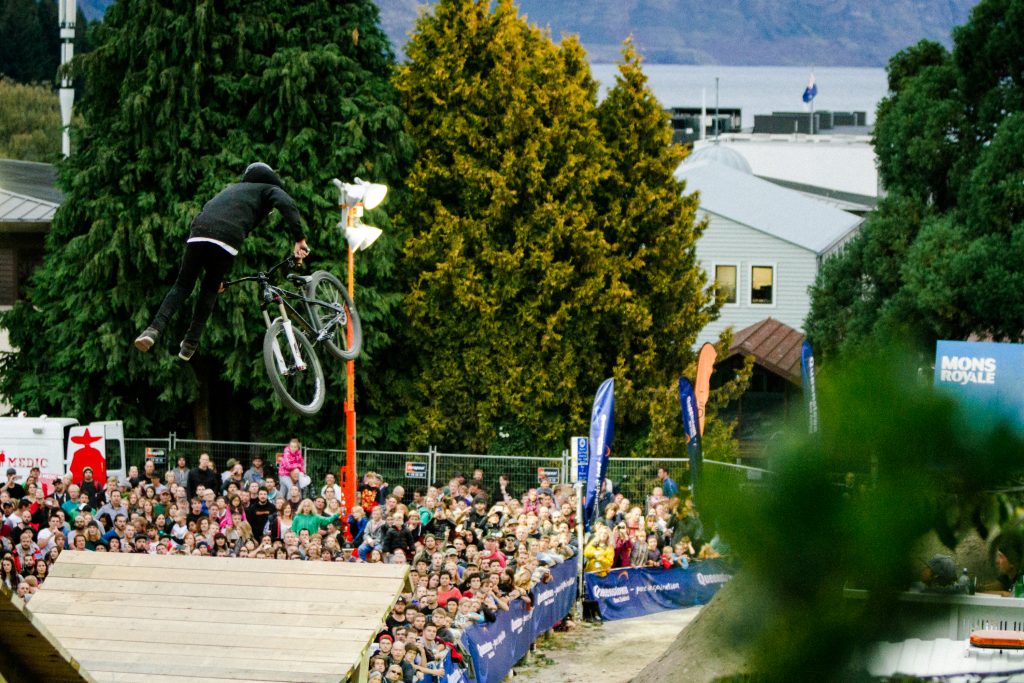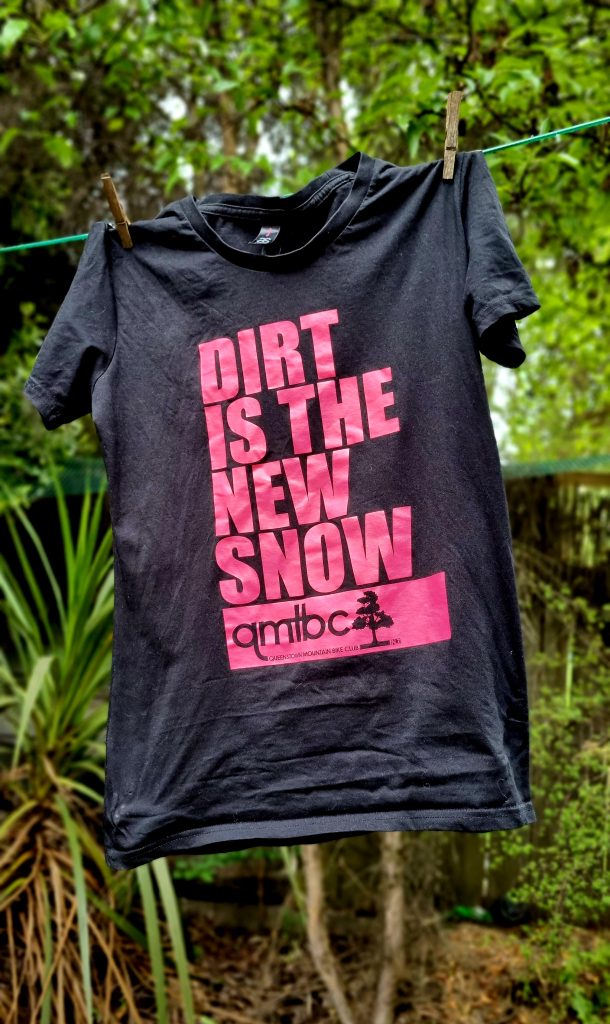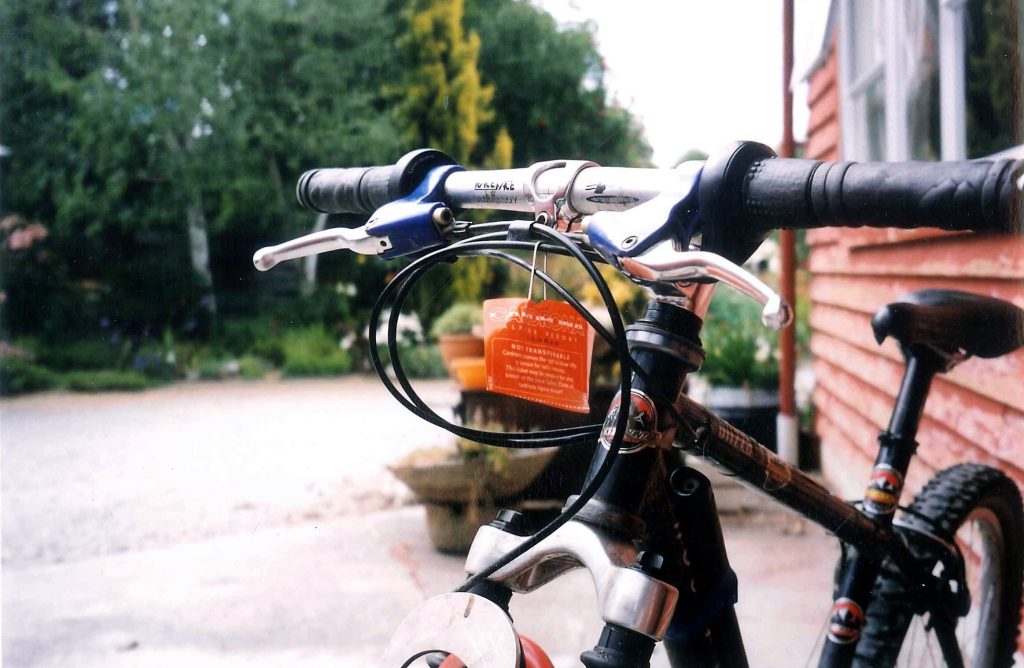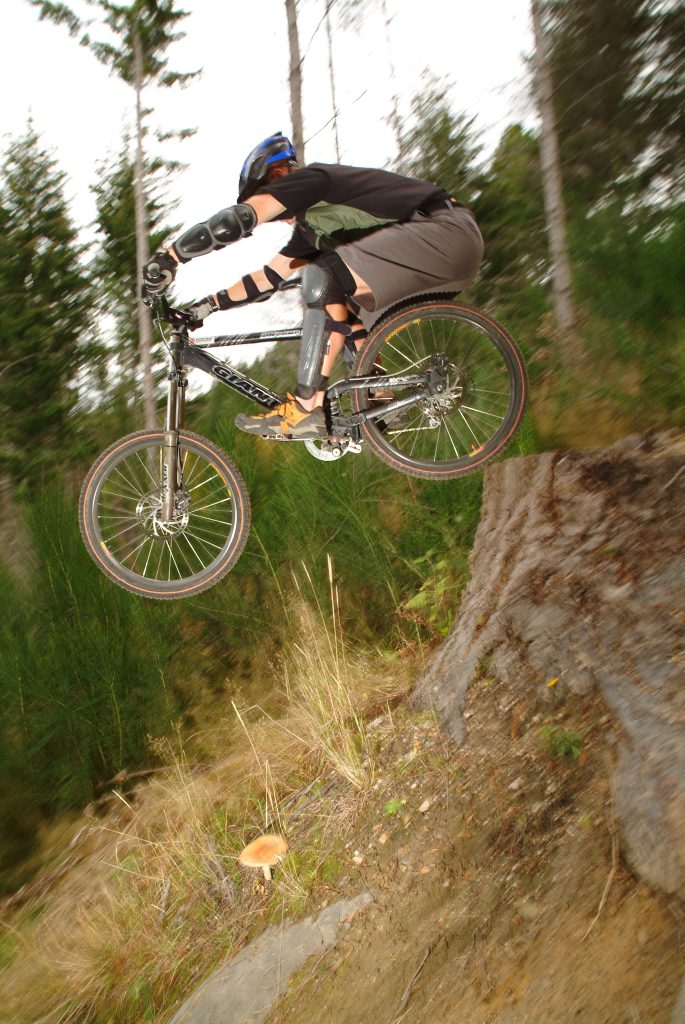Is mountain biking the future for the resort towns of the past?
WHEN WE USE THE PHRASE “RESORT TOWN”, WE GENERALLY MEAN ONE OF TWO THINGS: A PLACE WITH A BEACH, OR WITH ONE OR MORE SKI HILLS. QUEENSTOWN IS THE LATTER. IT’S PROBABLY THE COUNTRY’S BEST-KNOWN SKI RESORT.
CORONET PEAK, AOTEAROA’S FIRST COMMERCIAL SKI AREA, OPENED THERE IN 1947 WITH A SINGLE ROPE TOW; TODAY IT REGULARLY ATTRACTS MORE THAN 4000 SKIERS PER DAY, AND SKIING IS WORTH MORE THAN $1.4 BILLION PER YEAR TO THE NEW ZEALAND ECONOMY. WHICH IS TO SAY, SNOW BUSINESS IS GOOD BUSINESS. OR HAS BEEN.

But there’s a new sport in town, and it’s starting to exert its dominance. Mountain bikers in all their varied forms — racers, commuters, downhillers, bike packers, health buffs and weekend tourers — are part of one of the fastest-growing communities, and economies, in the world. In Queenstown, what was once a small scene in a wider dirtbag subculture is now firmly mainstream. There is hardly a household without a mountain bike. Every second car has a rack, the streets are littered with bike-branded clothing, and the bars teem with extremists in stinky knee pads rubbing shoulders with recreational pedallers just back from another Pinot- powered vineyard tour.
Twenty-five years ago, mountain biking was just a grubby sparkle in the region’s eyes. Today, it is a core string in the region’s tourism bow, just as the quality and duration of our snow seasons feel increasingly smaller, volatile and overcrowded. Is Queenstown proof that dirt is the new snow.

UPLIFTING THE SPORT
In 2011, the Queenstown Mountain Bike Club coined the catchphrase “dirt is the new snow”. They plastered it on tee shirts which they sold to the likes of myself: an impressionable 19-year-old University of Otago student who had just experienced her first gondola-assisted mountain bike ride after years of Lycra-clad Type 2 fun. I desperately wanted to be a part of the gang I’d seen hooting around Coronet Peak while I slogged up the access road on my road bike. I clocked their mud-splattered helmets, their faces etched with post full- throttle happiness. I wanted to breathe the good stuff that is dirt.
I wasn’t the only one. A key catalyst for the growth of mountain biking in the region was the use of pre-existing lift infrastructure – like the chairs at Coronet and the Skyline Gondola – for bikes. After all, riding downhill is fun. But for many people, getting your rig to the top is not.
Tony ‘T-Man’ Moore has been part of Queenstown’s mountain bike community for more than 20 years and has been heavily involved in the Queenstown Mountain Bike Club since 2003. “Back then mountain biking was quite a hard-core thing, just a small group of people,” he remembers. These modest numbers proved to be a blessing when the Skyline bosses decided to let mountain bikers use the gondola. The riders rode up in the regular passenger cabins, but the bikes went separately on the cargo trolley, which could only hold six bikes. And there was only one cargo run per cycle. “It was a real freak when friends were in town, because if we had more than six bikes, we had to wait for the other half of the loop to bring the baggage trolley through.” Then again, you get what you pay for. According to Tony, “when I first got to town, it was $46 for an annual pass for the gondola for my bike.” Today, it’s 50 bucks for a single ride up.

Good times, but the first experiment in bike uplift at Skyline was short-lived, due to an unlucky collision between a rider and a walker. The walker happened to be the wife of one of the members of Skyline’s Board of Directors, and the pin, as they say, was pulled.
Nonetheless, several legendary Queenstown trails date to this era. Grundy was one of the original Skyline tracks. The name came, as you might suspect, from some loose ‘grundies’ (that’s underwear in New Zealand-ish) that were unearthed mid-build. And a group of Queenstown riders who were training to represent New Zealand at an early UCI Mountain Bike Champs overseas built the World Cup track to train on, originally called WC-98. Both Grundy and World Cup are iconic trails in the present-day Queenstown network.
Skyline wasn’t the only local lift dabbling in mountain biking. Coronet Peak had first opened to bikes in the nineties. They ran the beginner chair for dirt slalom events, and there was an infamous race down the 2.4-kilometre M1 blue run. Riders would hit ridiculous speeds while negotiating flat corners and bunny hopping water ruts – it turns out biking down a blue ski run is a lot gnarlier than skiing down a blue ski run. Bike access came and went for a while, but a golden period in the late noughties saw the hugely successful Brake Burner Super-D race (a combination of downhill and cross-country) draw crowds.
Nearby, mountain biking was first trialled at Cardrona Alpine Resort during the summer of 1998/99. According to Nigel Kerr, who was in charge of marketing and events at the time, the plan was to target the downhill crew while also enticing the resort’s more traditional winter market, beginner/intermediates and families, to come up in summer. Cardrona hosted New Zealand Mountain Bike Association cross country and downhill events in 1999 and continued to run national series races in the following seasons. The numbers were low. A big turnout at the time was 100 riders, compared to the 4000 skiers and snowboarders on a busy winter’s day. But it was another important moment in the evolution of riding in New Zealand.

BACK TO THE FUTURE
There is a lot of hype. But does biking really stack up against snowsports in a ski town like Queenstown? A 2022 report by Benje Patterson Economics looked into the contribution of cycling to the Queenstown-Lakes economy, including the role it plays in the district’s economic and employment outcomes. Even during the 2021 border closures, it is estimated that spending by visitors who came exclusively to bike was more than $100 million. When tourists who identified biking as one of many reasons for coming are counted, this bumps up to more than $150 million. These numbers put the bike visitor economy at just over a third the size of the ski visitor economy at its pre-Covid peak. (Local cyclists splashed out big too – participating in biking in 2021 accounted for estimated $13.5 million of their households’ recreational expenditure.)
Meanwhile, climate change is making it harder for ski resorts to function. The days of consistently- white-blanketed slopes appear to be behind us. This year, Aotearoa experienced its warmest winter on record for the third year in a row. Mt Ruapehu closed three weeks early, with rain repeatedly washing away snow and high temperatures defeating the snow guns. Hills are making contingency plans like their European counterparts, who are putting millions into snowmaking (which comes with its own ethical and sustainable challenges) and summer operations.
It helps that Queenstown is a magnet for monied and well-connected people who also love bikes. The Patterson report was commissioned by Rod Drury, a local technology entrepreneur, philanthropist and all-round good sort who has pumped millions into local facilities, including saving the renowned Gorge Road dirt jumps and supporting a recent freshening of the tracks at Skyline. His approach is “build it and they will come”, and the above numbers are an indication he is right.
The question might not be whether brown pow is the new pow in Queenstown, but whether Queenstown is the new Whistler. For some residents, the answer is, yeah nah. As one local puts it, “forget your marketing model and forget your degree. In Whistler, they turn the gondola off and the town shrivels. Let’s not try to create another Whistler just because it’s easier to template someone else’s success then do it yourself.”
“You’ve got to open your mind to why the biking carry-on is recession-proof. To some people it is mental health, to others it’s spiritual awakening, others, a connection to nature, others, a chance to be competitive. The reason it blew up here is because it doesn’t fit in a box.”
For most of us it’s not about numbers or money. As a self-proclaimed busybody on the Queenstown bike scene, and someone who has spent the most of my twenties chasing summers in North America, the thing I hear most about mountain biking in Queenstown is that more than anything, it’s about the community. This is what draws folk back time and time again and lulls them into wanting to put roots down. Much like its cooler siblings, skiing and snowboarding, did years ago, biking here has evolved from something for exclusive die-hards to being for everyone.
Is dirt the new snow? If you’d like to discuss it, you’ll find me nursing a pint of Ginger Bear at Atlas Café, a mountain bikers’ haunt in the Queenstown CBD. But I can tell you already what my answer will be: yes.
KELSEY TIMPANY

